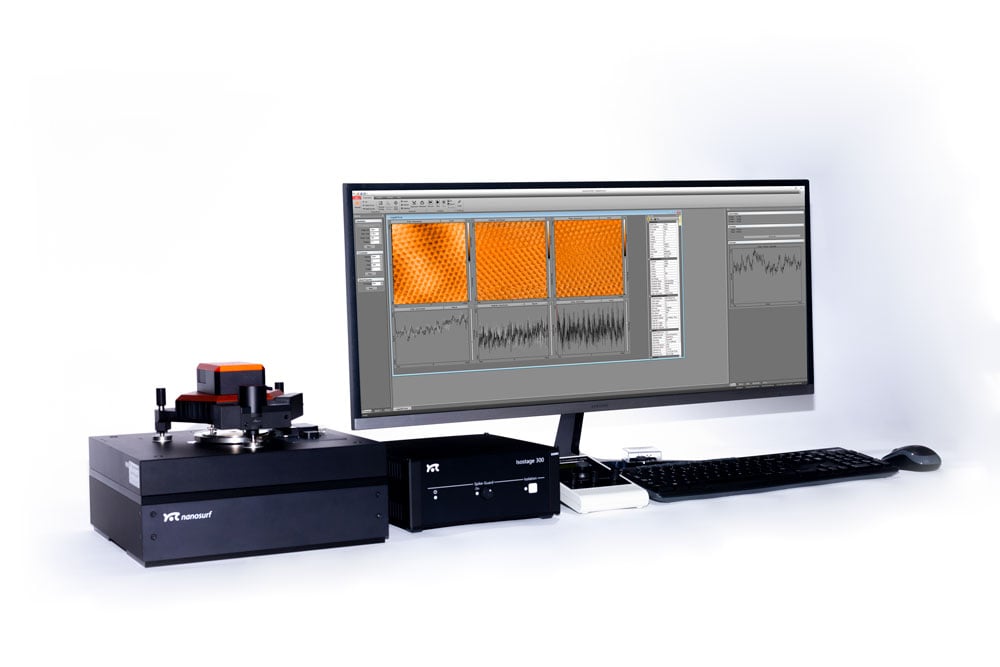Dive Deep into 2D Materials Research with Nanosurf AFM
Speak to an ExpertWhat secrets lie within the layered realms of 2D materials? As we delve deeper, the intricate geometric relationships of stacked compositions unfold, offering a wealth of insights. The precision in determining structural nuances, from twist angles to strain in Moiré superlattices, becomes paramount. Such meticulous detailing not only aids in identifying the crystallographic orientation of van der Waals (VdW) flakes but also sets the stage for crafting predictable Moiré heterostructures with unique properties. The exploration of tailored nanostructures unveils their formation and layered complexities, and when we turn our gaze to materials like graphene, their subtle electronic properties and surface potentials emerge.
Behind these discoveries stand cutting-edge research techniques. Moiré patterns, revealing the interactions and angles between lattice orientations, are made visible through the prowess of Atomic Force Microscopy (AFM). Specialized methods that facilitate the crafting of 2D materials pave the way for examining distinct nanostructures. Step height images offer a canvas of material layering nuances, while Kelvin Probe Force Microscopy (KPFM) on layered 2D materials plunges us into its intricate electronic terrain, expanding the horizons of our knowledge in the captivating world of 2D materials.
See our example applications for a glimpse of the possibilities AFM offers you.
See our example applications for a glimpse of the possibilities AFM offers you.
hBN on graphene moiré superlattice revealed by photothermal torsional resonance imaging
Torsional resonance phase image of hexagonally packed boron nitride on graphene with a 2.2° twist between the layers showing a moiré superlattice. Torsional resonance was photothermally excited using CleanDrive. Photothermal torsonal resonance imaging provides another possibility to reveal moiré patterns without the need for any kind of electrical excitation. Image size 500 nm, color scale 9.6°.
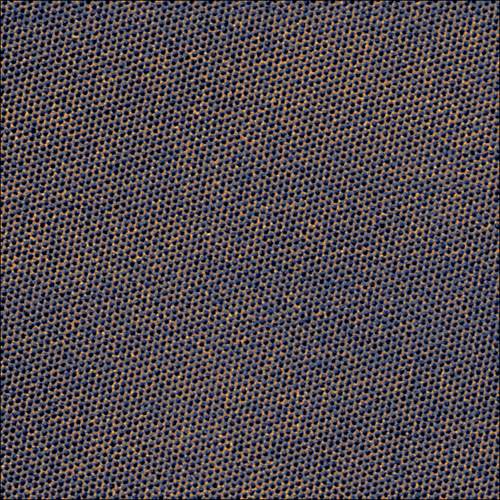
Cutting graphene by AFM lithography
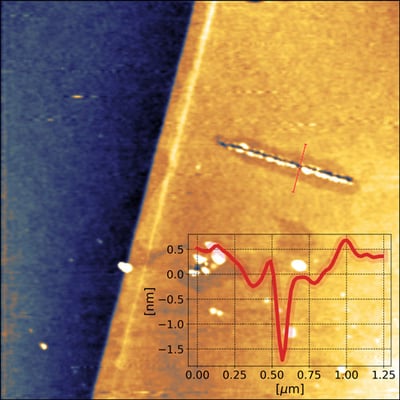
AFM topography image of a multilayer graphene flake on Si substrate with lateral dimensions of 10 x 10 μm2. Cuts were obtained by applying a 10V AC voltage at 500 kHz to the tip of a BudgetSensors ElectriTap190E cantilever (k = 48 N/m nominal) and following the designated path in Static Force Mode with an applied force of 5 μN at a speed of 100 nm/s. The relative humidity was 42%. Sample courtesy: Kim group, Harvard University, USA.
Moiré super lattice of twisted graphene
-and-1.jpg?width=400&height=400&name=AN01294_twisted-graphene-on-hBN_PFM_2D_153-nm-xy_-35-pm(amplitude%2c-left)-and-1.jpg)
Moiré super lattice of twisted graphene on hBN imaged in PFM mode at the contact resonance frequency. (A) amplitude and (B) phase. Scan size: 154 x 154 nm2. z scale: 35 pm (amplitude, left) and 1.56° (phase, right). Sample courtesy: Nanoelectronics group TIFR, India.
Topography of 4-layer twisted graphene
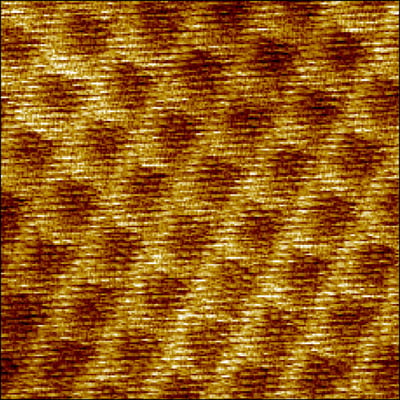
Topography image of 4-layer twisted graphene acquired in photothermally driven force modulation mode showing moire superlattice and atomic lattice resolution in the background. Image size 40 nm, color scale 200 pm. Sample courtesy Ghahari Lab, George Mason University.
Contact potential overlayed on topography
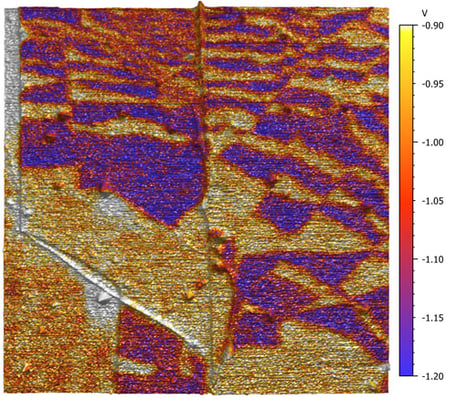
3D view of bilayer hexagonally packed boron nitride overlayed with the local contact potential difference obtained in FM-KPFM. The CPD shows a moire superlattice highlighting the complex electronic structure of this assembly. Sample courtesy Yiming Song & Thilo Glatzel, University of Basel. Image size: 4.86 μm, z scale 300 mV (CPD).
Measuring the thickness of multilayer graphene
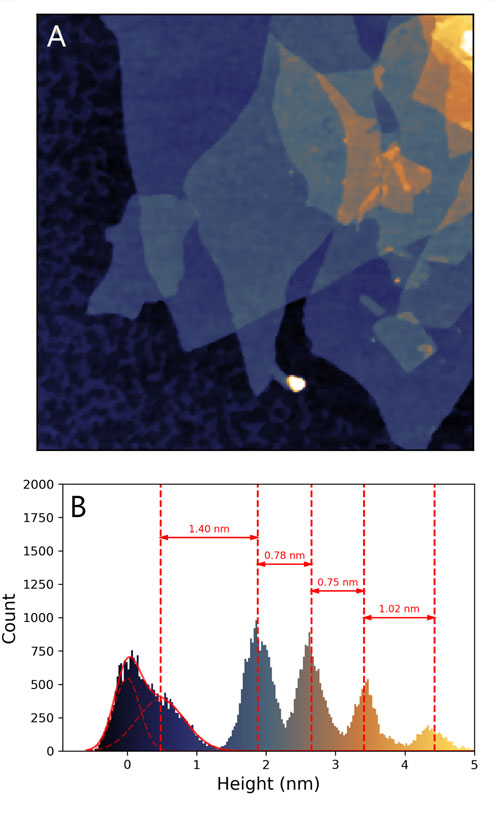
(A) AFM topographical image of graphene oxide with lateral dimensions of 5.11 x 5.11 μm2. (B) Histogram of the heights in (A) showing the thickness of the first 4 layers. Sample courtesy: Nanotech Energy, USA.
PFM imaging shows moiré superlattice of hBN on graphene
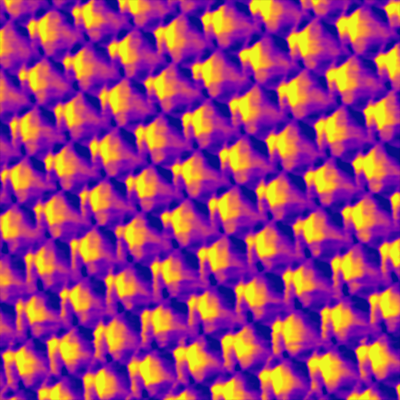
PFM phase image of of hexagonally packed boron nitride on graphene showing a moiré superlattice caused by lattice mismatch between the two layers. Image size: 334 nm.
Drive AFM
Nanosurf's flagship AFM system delivers ultimate performance for your 2D materials research. If you want performance without compromise, the DriveAFM is the instrument of choice.
- Resolve atomic lattice and moiré patterns simultaneously
- Ultra-low noise
- High stability thanks to CleanDrive
- Glovebox compatible
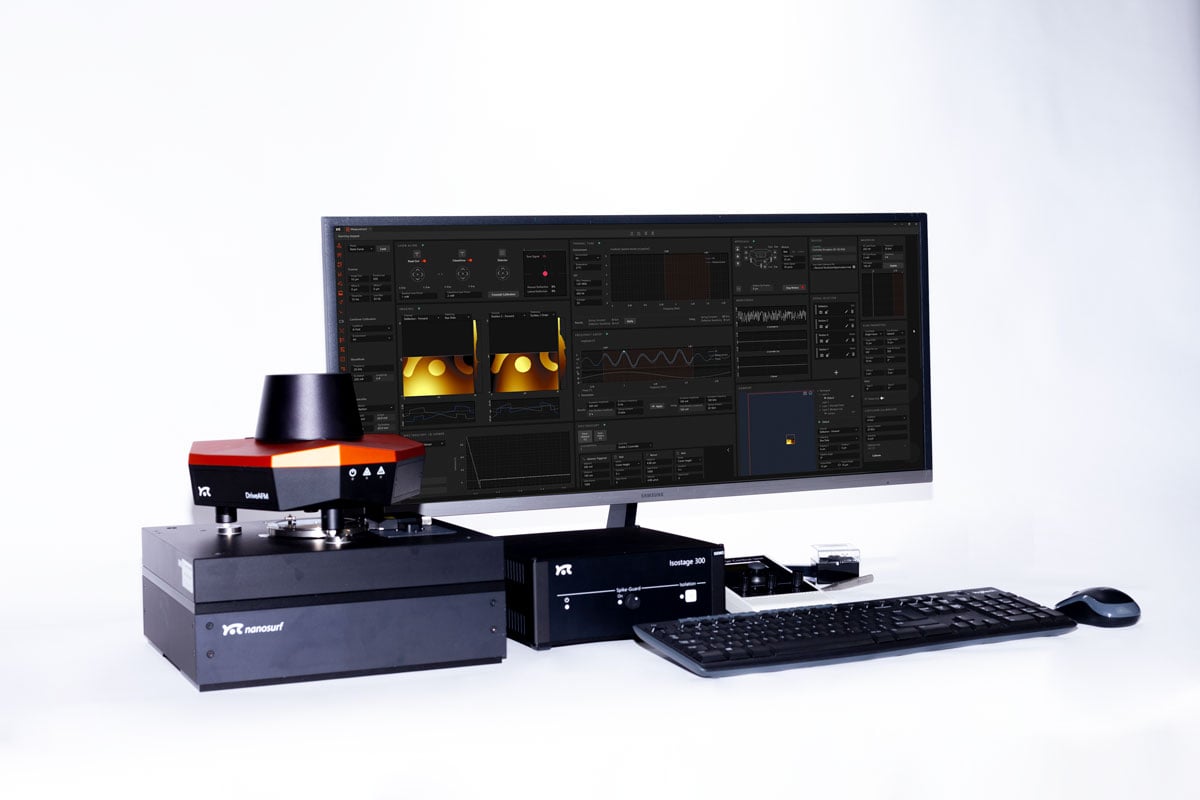
FlexAFM
Nanosurf's FlexAFM is one of the most established research AFMs available. Famous for its ease of use, this instrument excels in the glovebox and at applications involving electrical characterization.
- Versatile allround AFM system
- Large selection of electrical modes
- Established research AFM with unparalleled value
- Popular glovebox AFM
